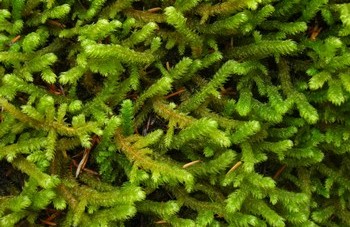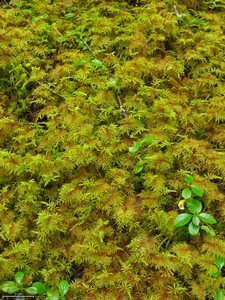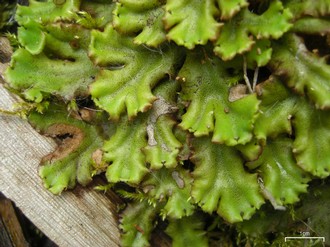Mosses & Liverworts
 Pipecleaner Moss |
To most people, including many botanists, mosses and liverworts (collectively called bryophytes) are little more than green curiosities: scraps of biological chinking that fill the dead spaces in the world’s vegetation. This view is unfortunate, for bryophytes are important contributors to many ecosystems. By building soil, for example, they help other plants get started. And then, by largely controlling the soil water balance, they help to maintain various plant communities.

Stairstep Moss
About 1000 moss species have been recorded in Canada, and nearly 700 in British Columbia. No comparable figures are available for the liverworts, though the B.C. total is probably close to 225 species. By comparison, the bryophyte flora of Wells Gray – with approximately 225 mosses and 50 liverworts – could at first seem rather modest. Yet only coastal B.C. has appreciably more kinds in areas of similar size. Coastal B.C., however, has been called moss capital of the world!
Primarily citizens of the wet, mosses and liverworts thrive both in the damper portions of the park, and in damp pockets of the drier portions. Especially productive are the spray zones of the waterfalls. Anyone who has visited Rainbow Falls at the east end of Azure Lake will not soon forget the stout, green “beards” of Antitrichia curtipendula that drape the branches of the trees there.

Liverwort
Text extracted, with partial updates, from the 2nd edition of Nature Wells Gray: A Visitors’ Guide to the Park, by Trevor Goward & Cathie Hickson © 1995, for several years out of print, and now awaiting sponsorship toward a third, much improved edition.

 Nature Wells Gray
Nature Wells Gray 

